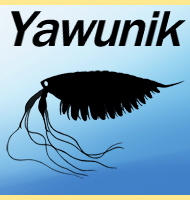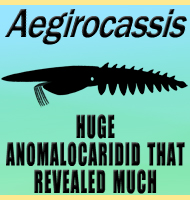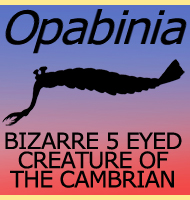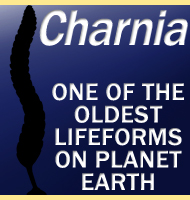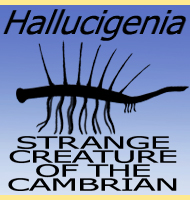


Ovatiovermis
Name:
Ovatiovermis
(Clap worm).
Phonetic: O-vat-e-o-ver-mis.
Named By: Jean-Bernard Caron & C�dric
Aria - 2017.
Classification: Animalia, Panarthropoda,
Luolishaniidae.
Species: O. cribratus.(type).
Diet: Filter feeder.
Size: Unavailable.
Known locations: Canada - Burgess shale.
Time period: Cambrian.
Fossil representation: At least two individuals.
Ovatiovermis
is loosely termed a naked lobopodian, this is because the body of
this creature was soft and not covered in armoured plates.
Lobopodians like Ovatiovermis are so called
because their limbs,
called lobopods, are fleshy tube like appendages. Ovatiovermis
had
nine pairs of these lobopods, arranged into three distinct groups.
The
first two pairs of lobopods situated closest to the head, were long
and covered in roughly twenty pairs of spines along their lengths,
with bifid claws at the tips. The next four pairs of lobopods after
these were similar, but overall shorter and with spines that were
smaller except for those growing towards the tips which were larger.
The last three pairs of lobopods were much shorter and thicker than
the others, no spines, just claws at the ends. It is thought that
these bottom three pairs of lobopods were for gripping hold of an
anchor point such as the head of a coral, and then waiving the upper
lobopods with spines through the water in order to trap small morsels
of organic matter, or creatures floating in the water.
There
is no clear distinction between the head and the body, but the mouth
of Ovatiovermis is situated on the end of a
proboscis. As food was
caught within the spines, the lobopods could be brought before the
mouth which then sucked the food up. The larger claws at the end of
the lobopods were likely more for climbing up sponges and corals.
Ovatiovermis also had two small nodules on top of
the head which may
have been primitive eyes.
Further reading
- Cambrian suspension-feeding lobopodians and the early radiation of
panarthropods. - BMC Evolutionary Biology. 17. - Jean-Bernard
Caron & C�dric Aria - 2017.
----------------------------------------------------------------------------
Random favourites
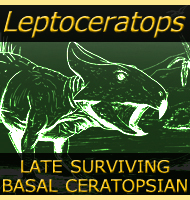 |
 |
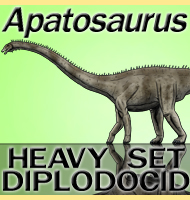 |
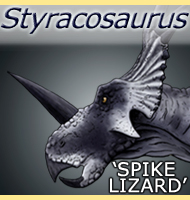 |
